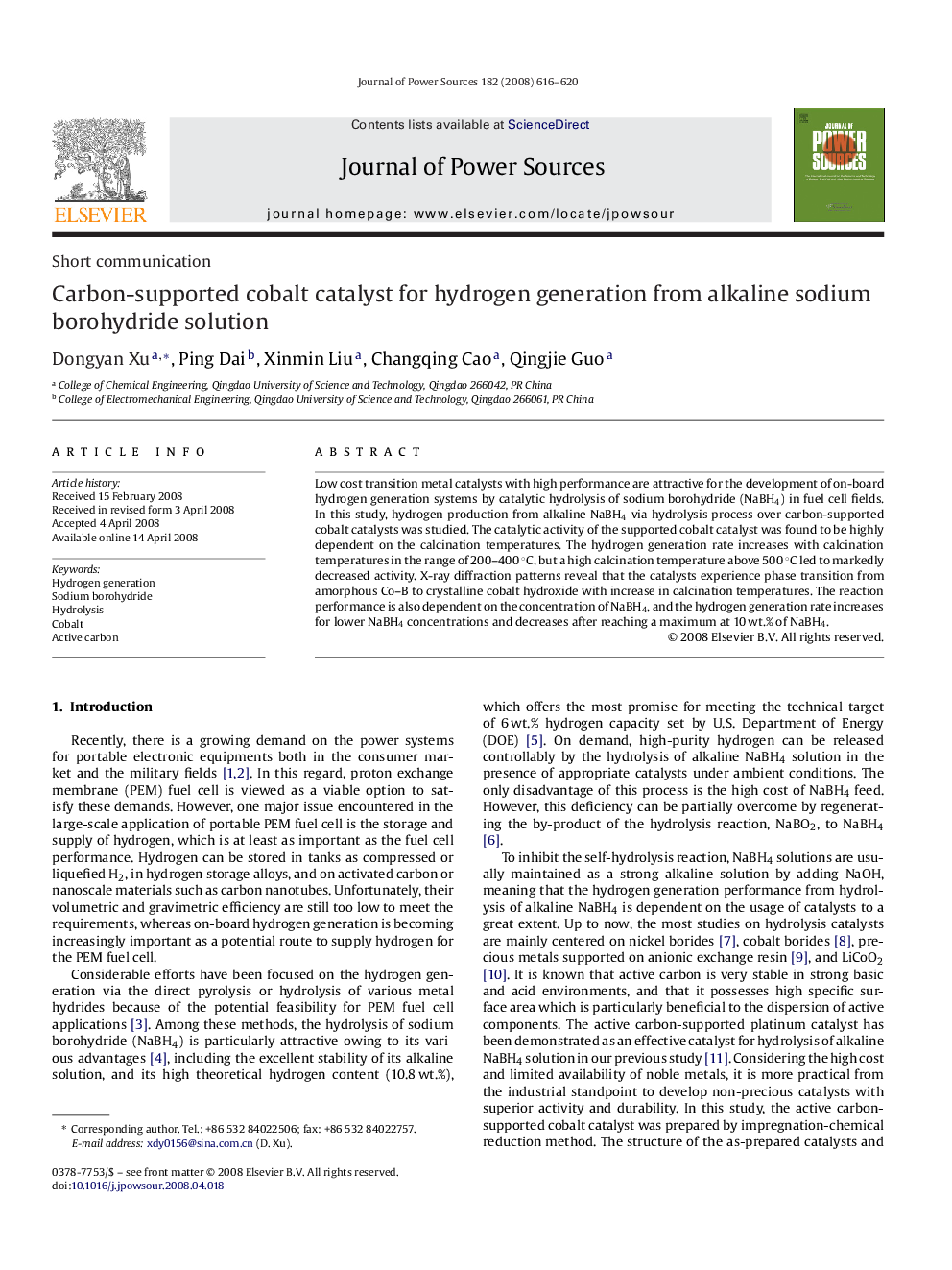| Article ID | Journal | Published Year | Pages | File Type |
|---|---|---|---|---|
| 1290050 | Journal of Power Sources | 2008 | 5 Pages |
Low cost transition metal catalysts with high performance are attractive for the development of on-board hydrogen generation systems by catalytic hydrolysis of sodium borohydride (NaBH4) in fuel cell fields. In this study, hydrogen production from alkaline NaBH4 via hydrolysis process over carbon-supported cobalt catalysts was studied. The catalytic activity of the supported cobalt catalyst was found to be highly dependent on the calcination temperatures. The hydrogen generation rate increases with calcination temperatures in the range of 200–400 °C, but a high calcination temperature above 500 °C led to markedly decreased activity. X-ray diffraction patterns reveal that the catalysts experience phase transition from amorphous Co–B to crystalline cobalt hydroxide with increase in calcination temperatures. The reaction performance is also dependent on the concentration of NaBH4, and the hydrogen generation rate increases for lower NaBH4 concentrations and decreases after reaching a maximum at 10 wt.% of NaBH4.
